Neat, Nerdy & Noteworthy Nonfiction

The CBC looks for a theme to spotlight in each month’s Hot Off the Press list so that we can alert parents, teachers, librarians, booksellers, and all children’s book enthusiasts to cool new offerings from our member publishers.
This month there’s a bumper crop of new, fabulous nonfiction books! Whether you love airplanes, animals, aliens, or advocacy, you’re sure to find something worth reading in this lineup. From octopus facts to puberty, from wilderness tips to evolution, these 20 titles from our August Hot Off the Press list underscore that nonfiction books are just as important—and more importantly, just as fun—as their fictional counterparts.

12 Ways to Get a Ticket to Space, by Kate Peridot; illustrated by Terri Po (The Quarto Group / Wide Eyed Editions) — STEM / STEAM, Science / Nature, Technology / Inventions, Places / Travel, ages 7-12.
Discover the many exciting ways that we could travel to space, now and in the future, with this colorful fact file for budding astronauts and space tourists.
Space travel has never been so accessible, with NASA even aiming to land humans on Mars in the 2030s. This book is a launchpad for the curiosity and intrepid nature that any young space traveler will need to have in our solar system and beyond.
Ripped-from-the-headlines STEM content meets creative, accessible ways to bring space to you across these twelve illustrated, four-page scenarios. You’ll also explore the International Space Station with a detailed cutaway map, visit a gallery of iconic rockets, and find out what it takes to be a real-life star-sailor at the astronaut training academy. Plus, at the Astronaut Hall of Fame, marvel at the achievements of explorers past – and milestones that could be reached in your lifetime.
When you’re finished with the tickets, start planning your journey to space with tips and prompts on how to prepare, such as riding a roller coaster to get used to zero-g, camping out beneath the stars, and designing your rocket, space station or lunar base.
With Terri Po’s whizz-bang illustrations of rockets, space stations, EVA suits, satellites and much, much more, 12 Ways to Get a Ticket to Space brings space travel within young readers’ orbit, and lets them experience something that may one day be their reality.
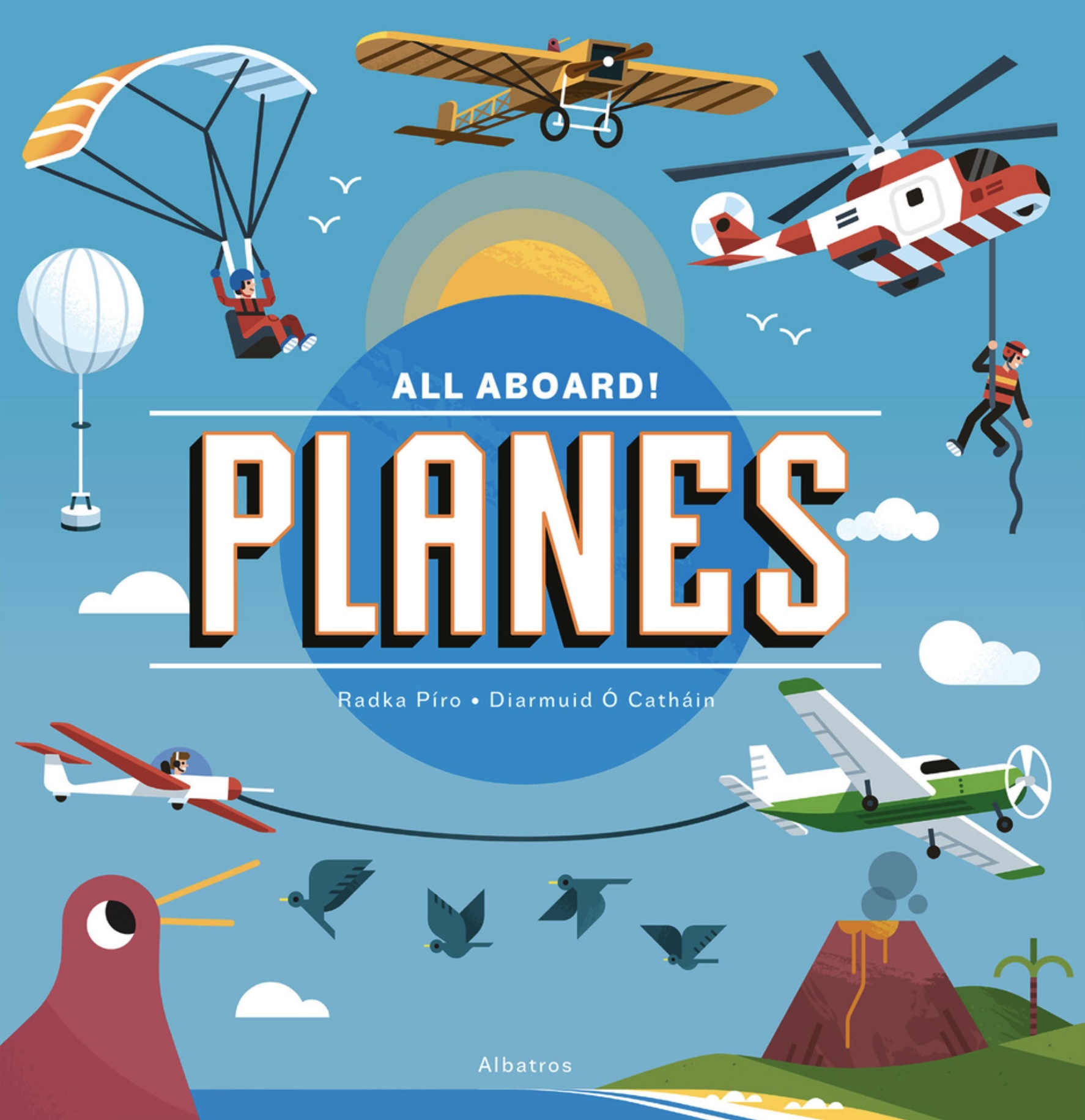
All Aboard Planes, by Radka Piro; illustrated by Diarmuid Ó Catháin (Albatros Books) — Construction / Transportation, Technology / Inventions, How-to / Activity, ages 7-12.
Join Karl the kiwi bird as we fly high into the awe-inspiring world of aviation, exploring planes and history in a fun, fully illustrated kids’ book.
Soar into the thrilling heights of aviation, spanning the rich history of flight, various aircraft types, and the critical influence of weather conditions on air travel. Follow Karl, a wingless kiwi bird with dreams of flying, on a virtual expedition through a bustling airport and a control tower as he turns his aviation aspirations into reality, despite his inability to fly. This book excels at simplifying intricate concepts, using vibrant illustrations and intriguing facts to captivate children’s imaginations. Whether your child aspires to be a pilot or seeks to quench their curiosity about the mechanics of airplanes, this book serves as an ideal springboard to the soaring world of aviation.
Geared towards aspiring aviators and airplane enthusiasts ages 6-9, this book is an educational resource that encourages curiosity and a passion for aviation. With its sturdy pages, vivid illustrations, and fun facts, it offers an immersive hands-on experience of the skies that simplifies complex concepts engagingly. The combination of modern graphics and Karl’s charismatic guidance turns learning about airplanes into a delightful adventure, fostering a lifelong love for aviation while providing valuable educational content in an accessible format.
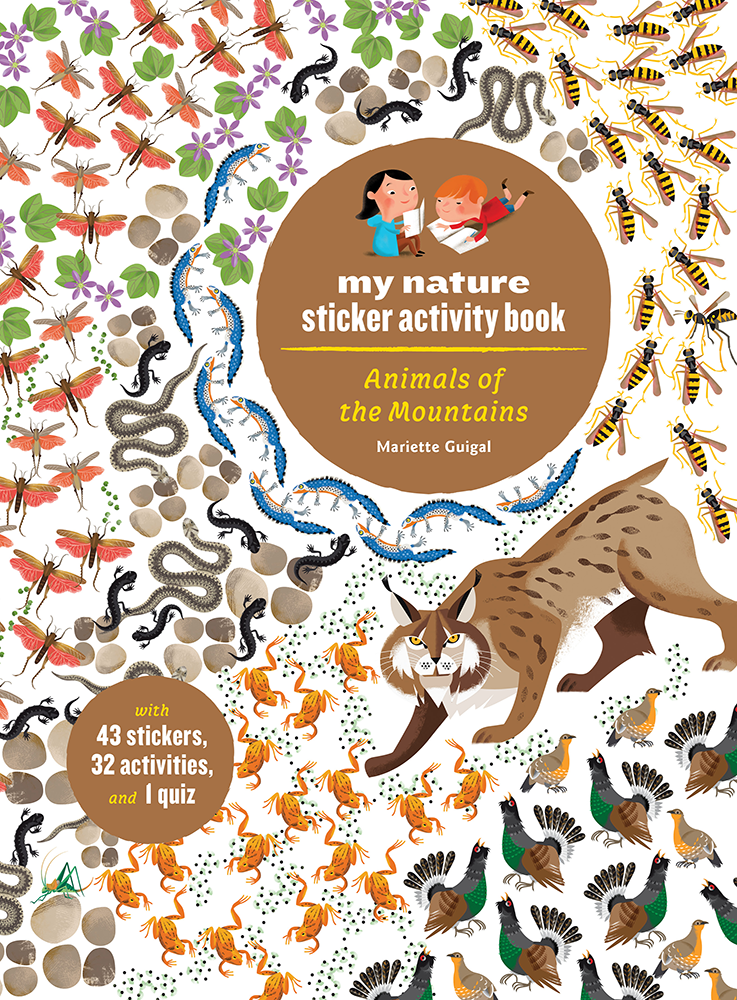
Animals of the Mountains, by Guénolée André; illustrated by Mariette Guigal (Chronicle Books / Princeton Architectural Press) — How-to / Activity, Animals, Science / Nature, ages 4-6.
Embark on a fascinating educational journey through mountain ecosystems around the world to discover the surprising and colorful mammals, insects, amphibians, and more that inhabit them! Interactive activities and stickers bring the wild creatures of the mountains to life, making learning an adventure for young readers.
Did you know that wolves love to play, even as adults? That marmots whistle to warn of danger? That alpine ibexes have horns that can grow three feet long? Animals of the Mountains, the latest addition to the popular My Nature Sticker Book activity series, is bursting with engaging facts like these and much more.
Perfect for curious minds and the ultimate companion for nature enthusiasts, this treasury of facts, activities, stickers, and amazing animal secrets encourages a sense of wonder and lays the foundation for a lifelong appreciation of our planet’s incredible diversity.
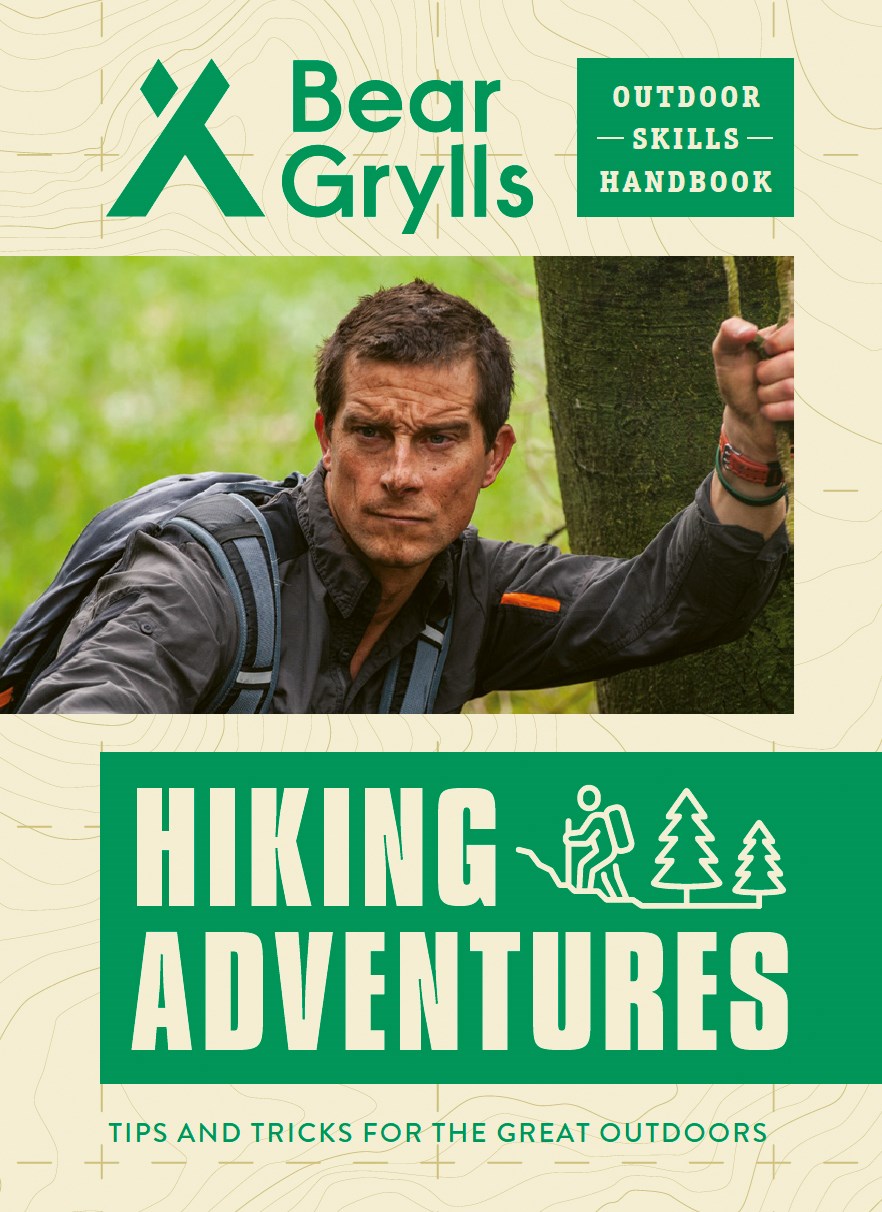
Bear Grylls Outdoor Skills Handbook: Hiking Adventures, by Bear Grylls; illustrated by various (Kane Miller Books) — How-to / Activity, Sports / Games / Recreation, Science / Nature, Series, ages 7-12.
Embark on a wild adventure with Bear Grylls! The Bear Grylls Outdoor Skills Handbooks offer step-by-step instructions and tips from Bear Grylls to prepare young adventurers for the wilderness. Bear Grylls guides you to cross a river, forge a trail, and stay safe while out hiking in this helpful handbook.
Sita MacMillan is a registered member of Zagime Anishinabek and is of a mixed Cree and Scottish background and Azby Whitecalf is a Plains Cree illustrator and character designer.
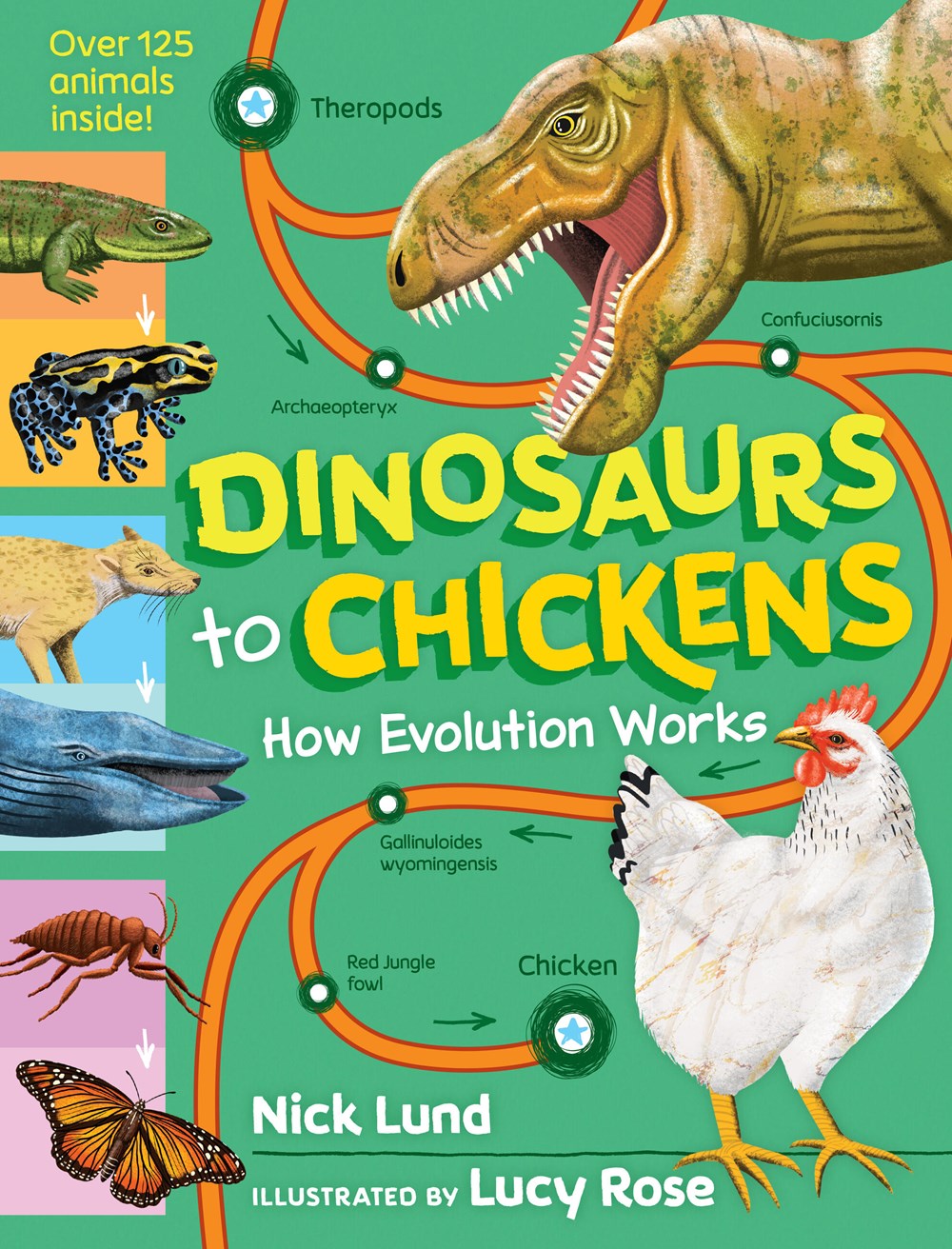
Dinosaurs to Chickens: How Evolution Works, by Nick Lund; illustrated by Lucy Rose (Workman Publishing Company / Workman Kids) — Science / Nature, Animals, Historical Fiction, Facts / Trivia, ages 7-12.
Kids will love this fascinating evolutionary science book, which showcases over 125 animals in 30 charts and features the most astonishing evolutions in Earth’s history.
Dinosaurs to Chickens: How Evolution Works showcases over 125 animals in 30 charts that feature the most astonishing evolutions in Earth’s history! Track the evolution of traits from the Tyrannosaurus Rex’s to the chicken, the first insect to the monarch butterfly, the giant sloth to the armadillo and many more. With full-color illustrations throughout, plus a gatefold showing how species connect and evolve via the “Tree of Life,” this book makes the science of evolution an exciting and accessible topic for young readers, and will capture the fascination of kids who already love science, dinosaurs and fossils.
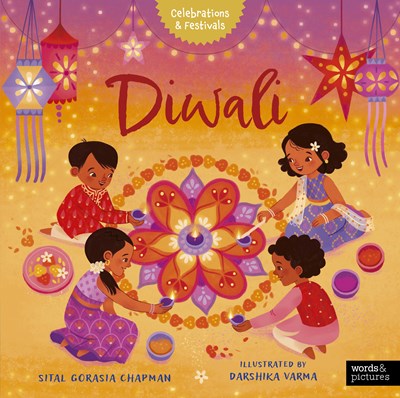
Diwali, by Sital Gorasia Chapman; illustrated by Darshika Varma (The Quarto Group / words & pictures) — Religion / Spirituality, Holidays / Seasons / Celebrations, Cultural Diversity, Family / Community, ages 4-6.
Discover the joy and meaning of the magical festival of Diwali, a very special time for people all around the world.
Sonali and her brother Jay are inviting you to celebrate with them! Join in as they make rangoli patterns, cook up a feast with their nani and nana, and visit all their friends and family with gifts and delicious treats.
Along the way, you’ll learn how Diwali is a fun five-day celebration, all about the victory of light over darkness, good over evil, and knowledge over ignorance.
In this immersive exploration of Diwali, kids join a family as they celebrate this vibrant festival. A simple way to introduce little ones to this important occasion, guided by young children who are celebrating.
Part of the Celebrations & Festivals series, you are invited into a family’s celebrations as you explore the magic and excitement of religious and cultural festivals around the world.
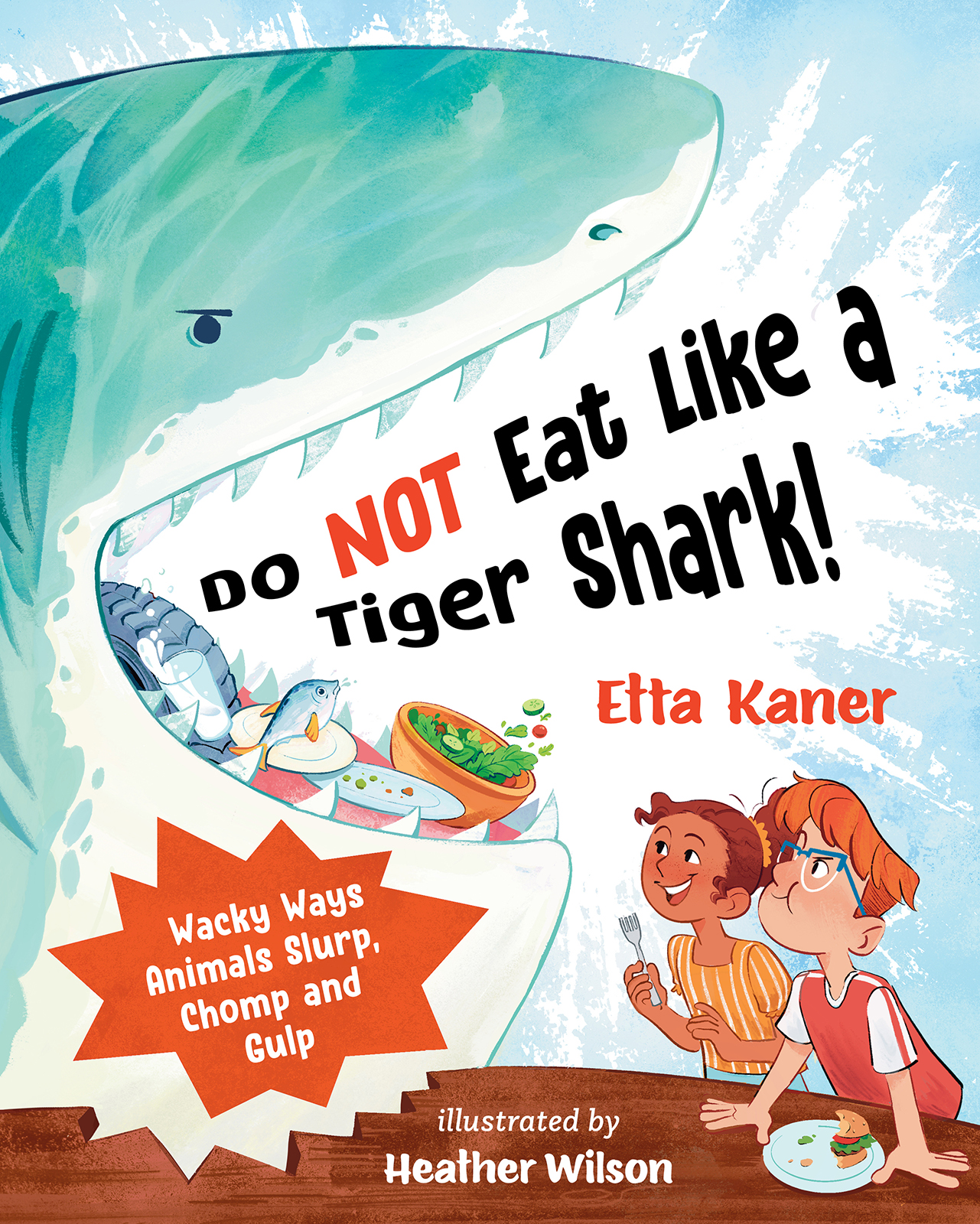
Do NOT Eat Like a Tiger Shark, by Etta Kaner; illustrated by Heather Wilson (Orca Book Publishers) — Animals, Humor, Science / Nature, Facts / Trivia, ages 4-6.
Animals eat and drink in surprising, amazing and downright weird ways. Bearded vultures throw their food. Dogs slurp when they’re thirsty. Amazon horned frogs swallow their meal whole. Cows burp. You should definitely NOT copy their behavior at the dinner table. It wouldn’t be funny at all. In fact it could be disastrous. So mind your manners and find out what you should NOT do when you’re eating or drinking.
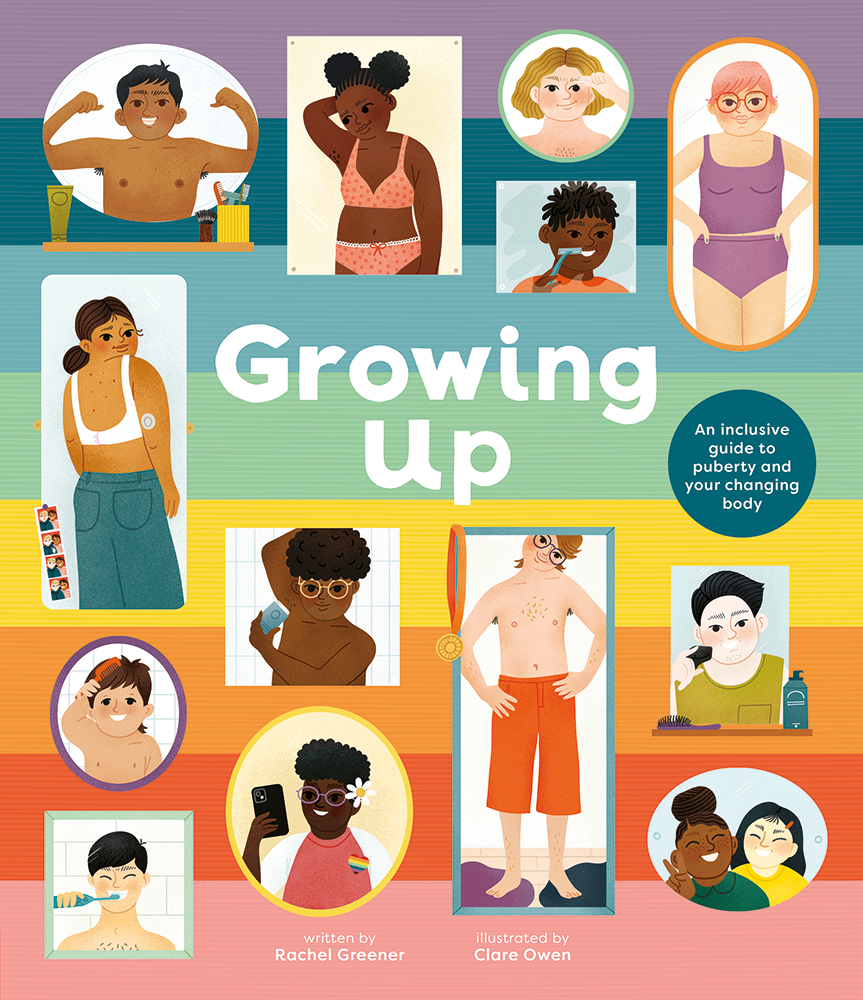
Growing Up: An Inclusive Guide to Puberty and Your Changing Body, by Rachel Greener; illustrated by Clare Owen (Nosy Crow) — Mental / Physical Health, Coming of Age, Cultural Diversity, Friendships, ages 7-12.
Growing up is a natural part of life, and every child deserves to understand the different ways their body may change as they grow older. While puberty happens to everyone, every child’s journey from childhood to being a grown-up will be as unique as they are!
In this honest, accessible, and inclusive illustrated guide to puberty, young readers can find out exactly what they and their peers may experience as they grow up. From getting taller and discovering hair growing in new places to developing breasts, experiencing periods, or having wet dreams, this book provides the perfect stepping stone for every caregiver to have an open conversation about what puberty really means.
Working closely with a leading national LGBTQ+ organization as well as a biology specialist and a diversity, equality, and inclusivity consultant, Growing Up covers everything from biological sex and gender identity to physical changes and emotional development, including sections on friendships and emotional health, creating and respecting boundaries, and online safety.Written in friendly and accessible language that can be shared with a child or read independently, Growing Up also includes a further reading section and glossary to answer more complex questions, as well as a resource guide where young readers can find help from trusted sources outside of the home or school environment.
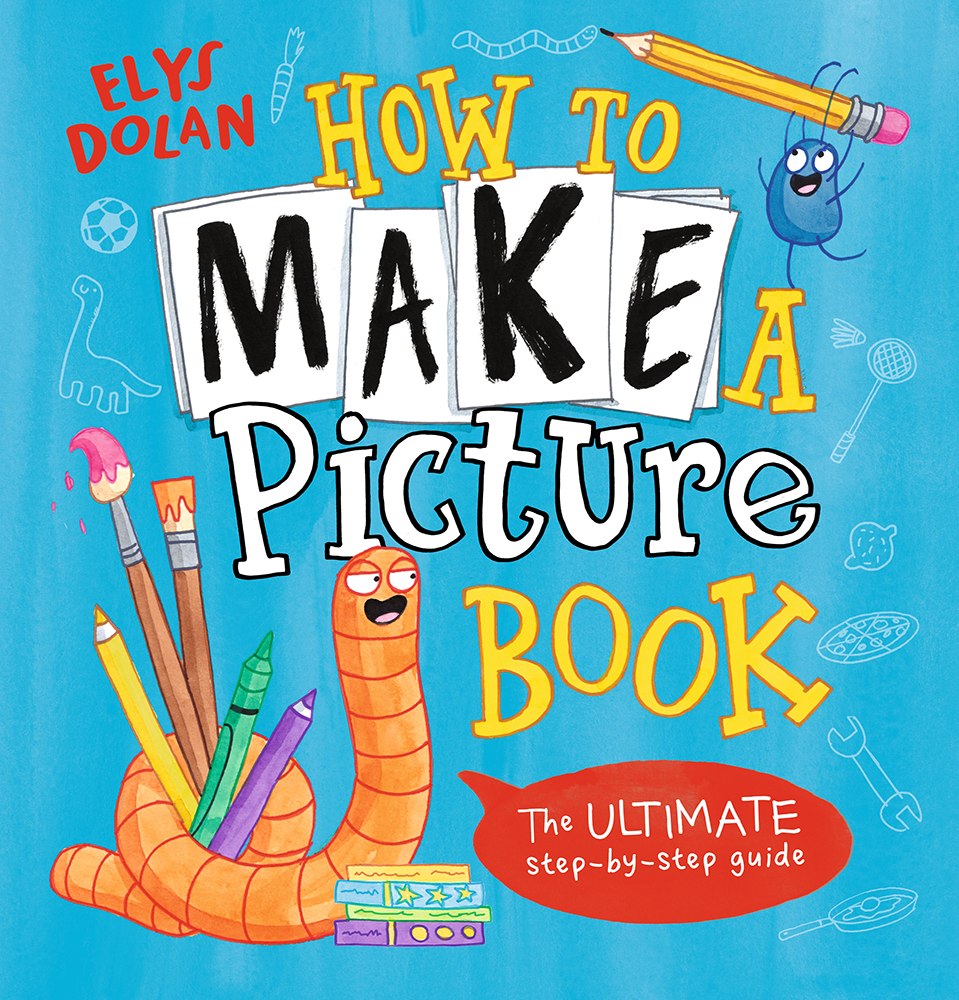
How to Make a Picture Book, written & illustrated by Elys Dolan (Candlewick) — How-to / Activity, Art / Performing Arts, Careers / Hobbies, Humor, ages 7-12.
Have you ever wanted to create your own story—and capture it for posterity? Elys Dolan brings her comic touch to the process by portraying her narrator-self as a friendly worm (it’s quicker to draw than a person!). How do you come up with something to write about? Build and flesh out your story? Use color and space effectively? From combining two favorite things to form a story idea to “interviewing” your characters to physically putting a book together, the author walks readers through some surprisingly comprehensive beginners’ techniques that may have something to offer even seasoned storytellers. This witty, fun, conversational, step-by-step guide—part picture book, part activity book—is packed with prompts, exercises, tips, and jokes. So find your inspiration, grab your pens and pencils, and get making!
Everyone has a story to tell—and now you can learn how to tell it in your own picture book, using this helpful, humor-filled guide from an award-winning creator.
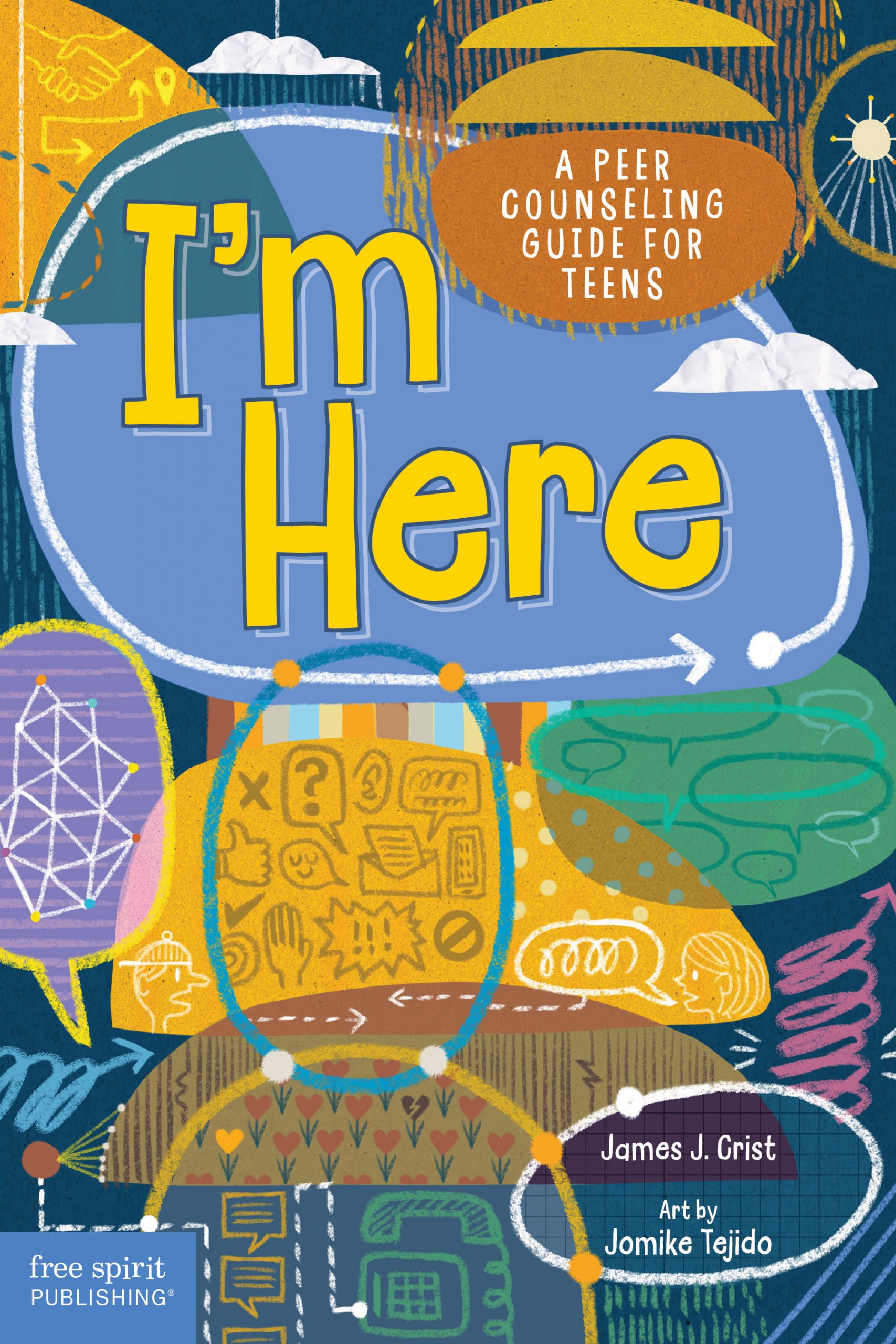
I’m Here: A Peer Counseling Guide for Teens, by James J. Crist, Ph.D.; illustrated by Jomike Tejido (Free Spirit Publishing) — Mental / Physical Health, Social Emotional Learning, Friendships, Teen.
Advice for teens wanting to help friends and peers with their mental health.
Mental health problems in young people are on the rise, and teens want resources to help friends in crisis. I’m Here: A Peer Counseling Guide for Teens fills that need, discussing teens’ mental health and providing information about the skills needed to help others. With advice around problem-solving, goal setting, conflict resolution, and what to do when someone’s problems put the person or others in harm’s way, this book shares important helping skills teens can use to listen to and support one another. Whether helping others informally or as a peer counselor, teens will find tips for learning helping skills and sample dialogues and ideas for teaching skills to others. I’m Here also shares when it’s time to seek adult help and considerations before helping others. Recurring Peer Counselor Tips provide advice specific to teens participating in formal, school-based peer counseling programs. A special section includes additional resources, articles, and organizations for teens.
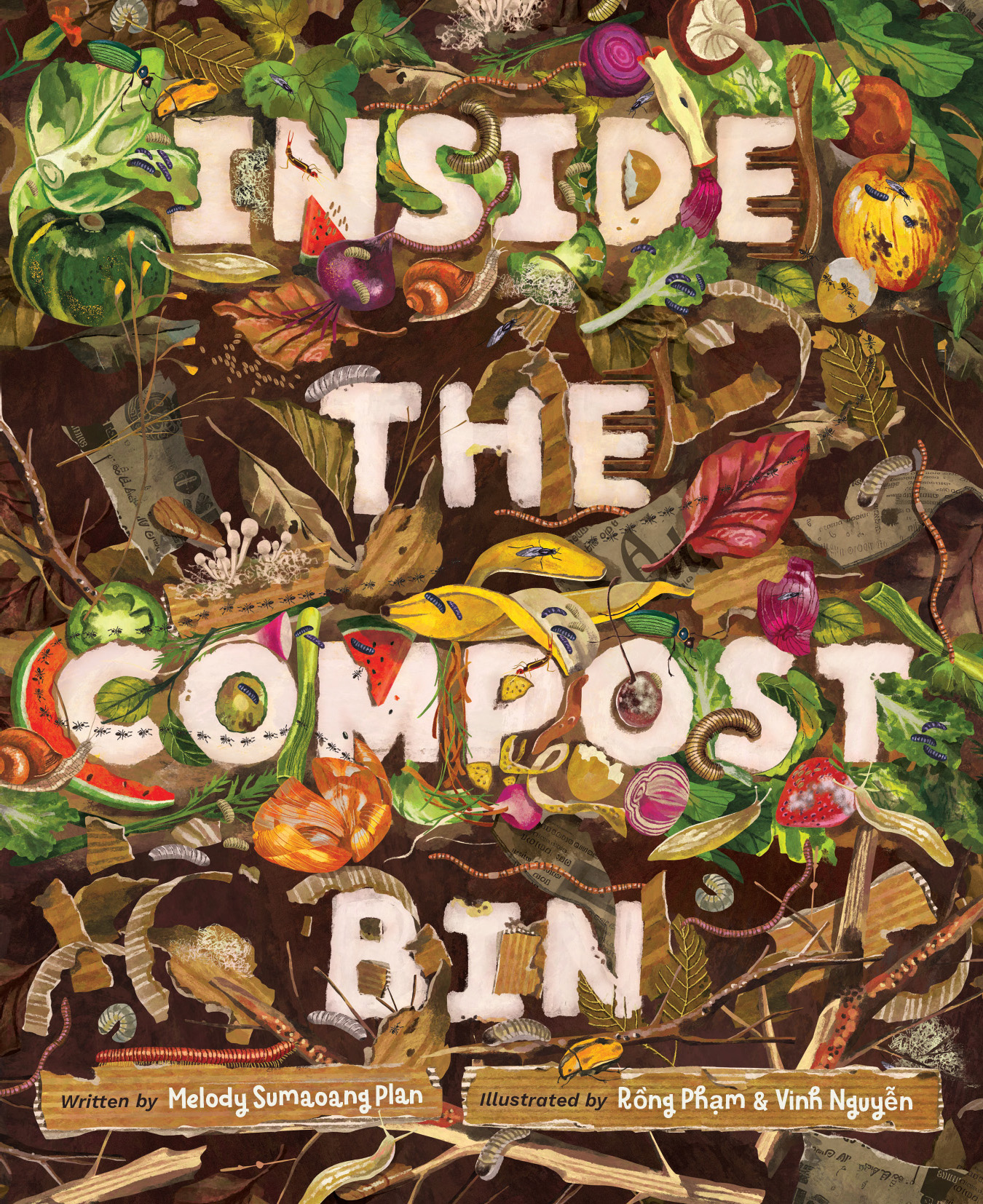
Inside the Compost Bin, by Melody Sumaoang Plan; illustrated by Rồng Phạm & Vinh Nguyễn (Cherry Lake Publishing Group / Tilbury House Publishers) — Environment / Sustainability / Recycling, Science / Nature, How-to / Activity, Social Activism / Equality / Feminism, ages 7-12.
Through lyrical text filled with concrete processes and facts, readers will build and tend to a compost bin. From creation of the “compost cake” to curing and, finally, using the compost, budding composters will discover what it takes to have a successful bin–as well as the plethora of benefits a compost bin can have to the surrounding environment. Master composter, Melody Sumaoang Plan, shows readers the physical, biological, and chemical processes involved and rich illustrations take them deep inside the murky bin. Robust back matter includes in-depth information on starting your own bin, compost “recipes,” and troubleshooting tips.
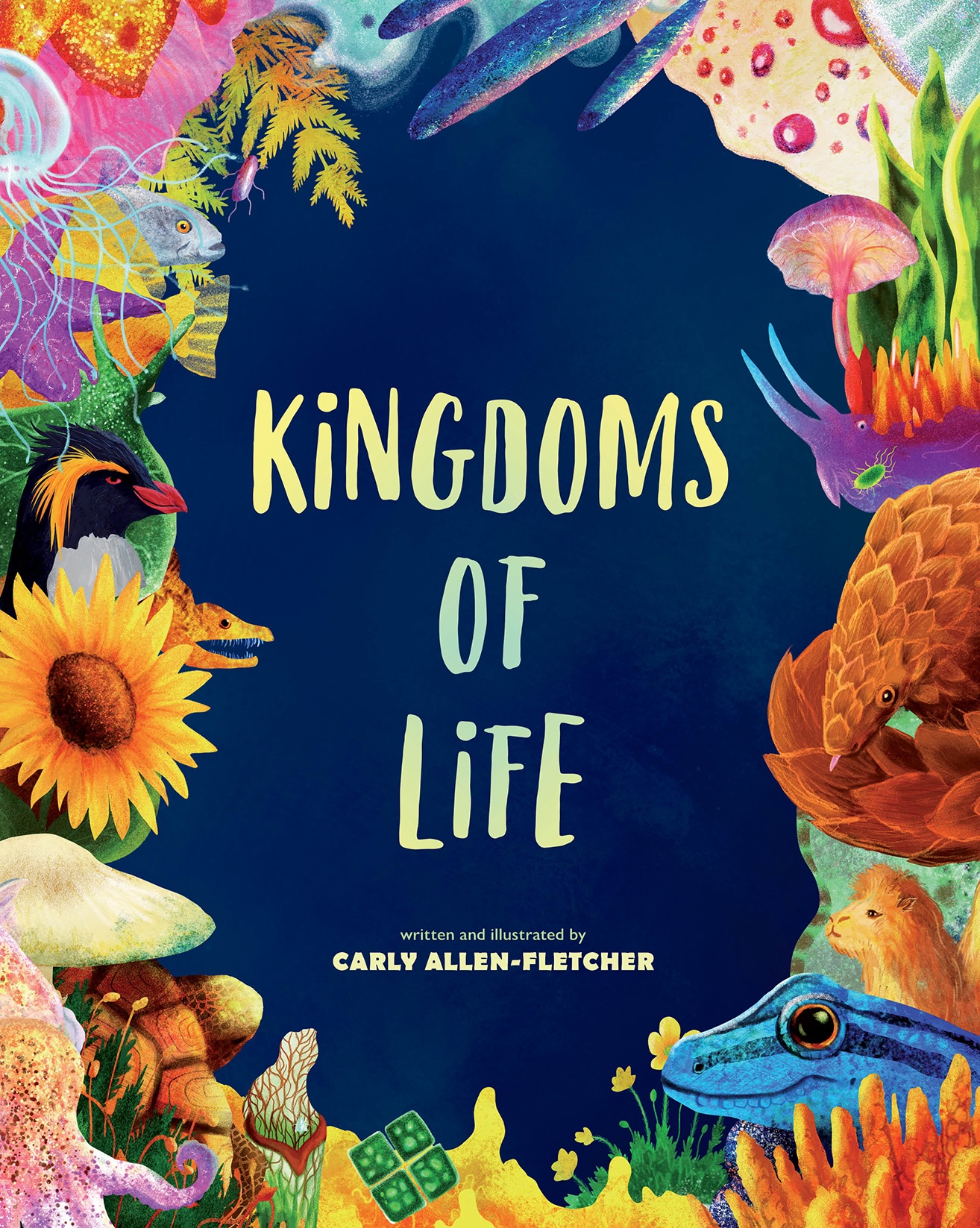
Kingdoms of Life, written & illustrated by Carly Allen-Fletcher (Eerdmans Books for Young Readers) — Science / Nature, STEM / STEAM, Animals, Facts / Trivia, ages 7-12.
An awe-inspiring journey through the kingdoms of animals, plants, protists, fungi, archaea, and bacteria.
Life is all around us—in millions of different forms! In this spectacular book, Carly Allen-Fletcher invites children on an amazing tour of scientific classification’s six kingdoms of life. Every page will spark new questions: what makes each kingdom unique? Where do scientists place camels, baobabs, seaweed, and bread molds? How about the tiny things wriggling under our microscopes? What weird and wonderful life-forms have been discovered in the geysers of Yellowstone and on the seafloors off the coast of Namibia?Exploding with bright colors and mind-boggling details, Kingdoms of Life presents the kaleidoscopic beauty of life on our planet. This fascinating book is the perfect introduction to how the science of classification helps us explore and understand the wonders of nature.

Mighty Mindsets: How Mindfulness Can Help Your Child With Life’s Ups and Downs, by Niamh Doyle; illustrated by Carol Betera (Little Island Books) — Social Emotional Learning, How-to / Activity, Mental / Physical Health, ages 7-12.
Has your child ever said “I can’t do this” or “I’m not good at that”? Do they find it hard to see the good in themselves? Do they feel overwhelmed at times? Children can struggle with life’s challenges, big and small. Written in a child-friendly way, featuring practical tools they can use every day, this book will help your child build new habits and ways of thinking, understand their emotions, and become happier and more resilient. We know mindfulness can help us and our children to live in the moment and calm our minds. But what exactly is mindfulness? And why does it make it easier to deal with whatever life throws at us? How does your brain work, and what does it have to do with moods? Why do you sometimes feel anxious, cross or afraid, and what can you do about it? How can breathing, looking at a snowglobe, or changing what the voice inside you says, help you feel better? When we tell ourselves negative stories – like “I’m not good at maths” – it becomes harder to learn. But if we can change our mindset – “I’m not good at maths yet” – we help our brains to learn.
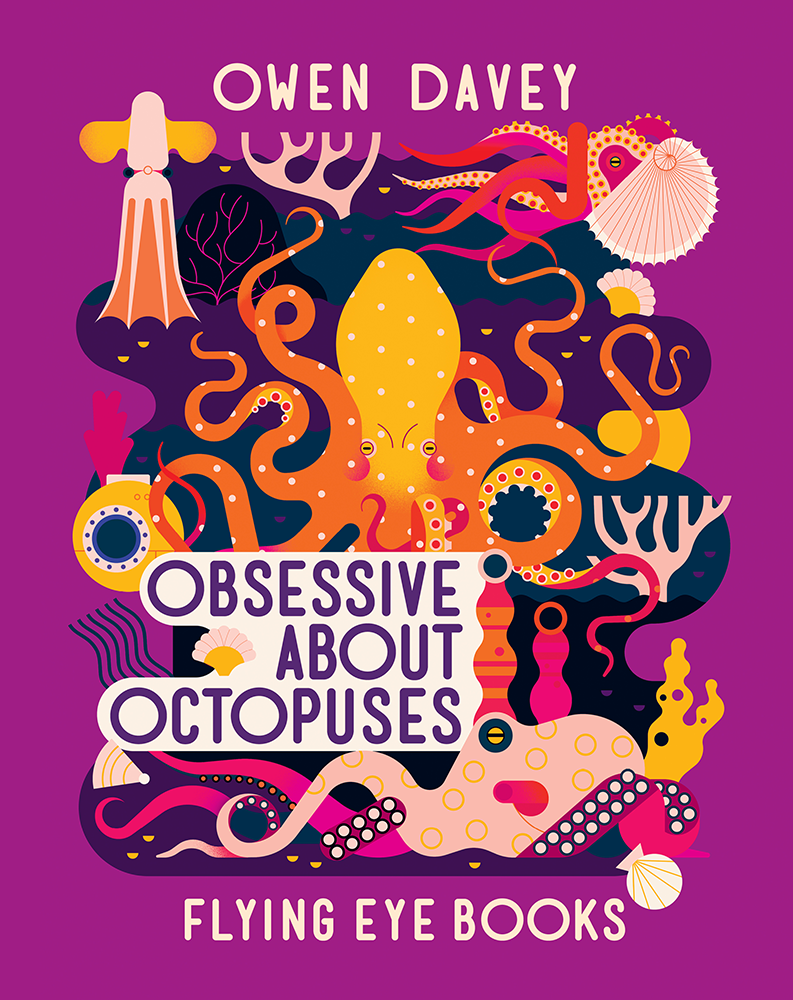
Obsessive About Octopuses, by Owen Davey (Flying Eye Books) — Animals, Environment / Sustainability / Recycling, Science / Nature, Facts / Trivia, ages 4-6.
Did you know that an octopus has three hearts? And that they are particularly intelligent, with some being known to use tools? Dive into this fascinating illustrated guide all about the aliens of the deep. From the truly terrifying giant Pacific octopus to the inventive common octopus, find out where they live, what they eat and how we can protect them. The latest paperback in acclaimed illustrator Owen Davey’s popular “About Animals” series, featuring his signature minimalist art style with colorful, design-oriented layouts–Obsessive About Octopuses is sure to delight kids as well as adult cephalopod fans.
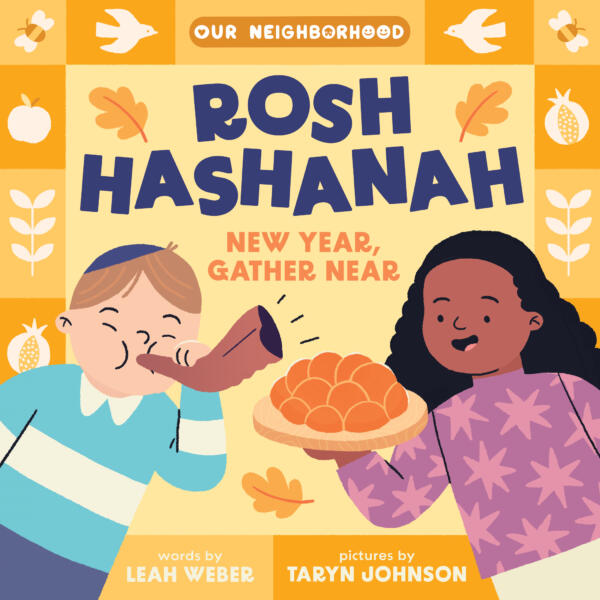
Rosh Hashanah: New Year, Gather Near, by Leah Weber; illustrated by Taryn Johnson (Little Bee Books) — Cultural Diversity, Religion / Spirituality, Holidays / Seasons / Celebrations, Family / Community, ages 0-3.
Introduce little ones to Rosh Hashanah with this beautiful, colorful board book. Children can see a Jewish family come together and celebrate the holiday with sweet apples and honey, a noisy shofar, and more. Perfect for the holiday, but precious no matter the season, this is a great addition to any child’s library.

Sightseeing With Aliens, by Insha Fitzpatrick; illustrated by Lilla Bölecz (Quirk Books) — Science / Nature, Folklore / Fairytales / Myths, Facts / Trivia, History, ages 7-12.
Discover everything about aliens in this fun handbook packed with eerie accounts of the extraterrestrial, fascinating science, and weird facts–perfect for middle grade readers and young sci-fi fans.
Incoming transmission . . . Are there aliens out there? What’s the deal with Area 51? Can outer space support human life? Explore the extraterrestrial in Sightseeing with Aliens, a field guide for the curious and the adventurous. The third book in the Totally Factual Field Guide to the Supernatural series, Sightseeing with Aliens is a hilarious and unabashedly weird investigation into how the unknown can shape our lives. Get to know the extraterrestrial with stellar illustrations and hands-on activities, like creating a time capsule and taking on the 7-Day Earthling Challenge to help Planet Earth. The whole galaxy is out there—grab your guide, and let’s go!
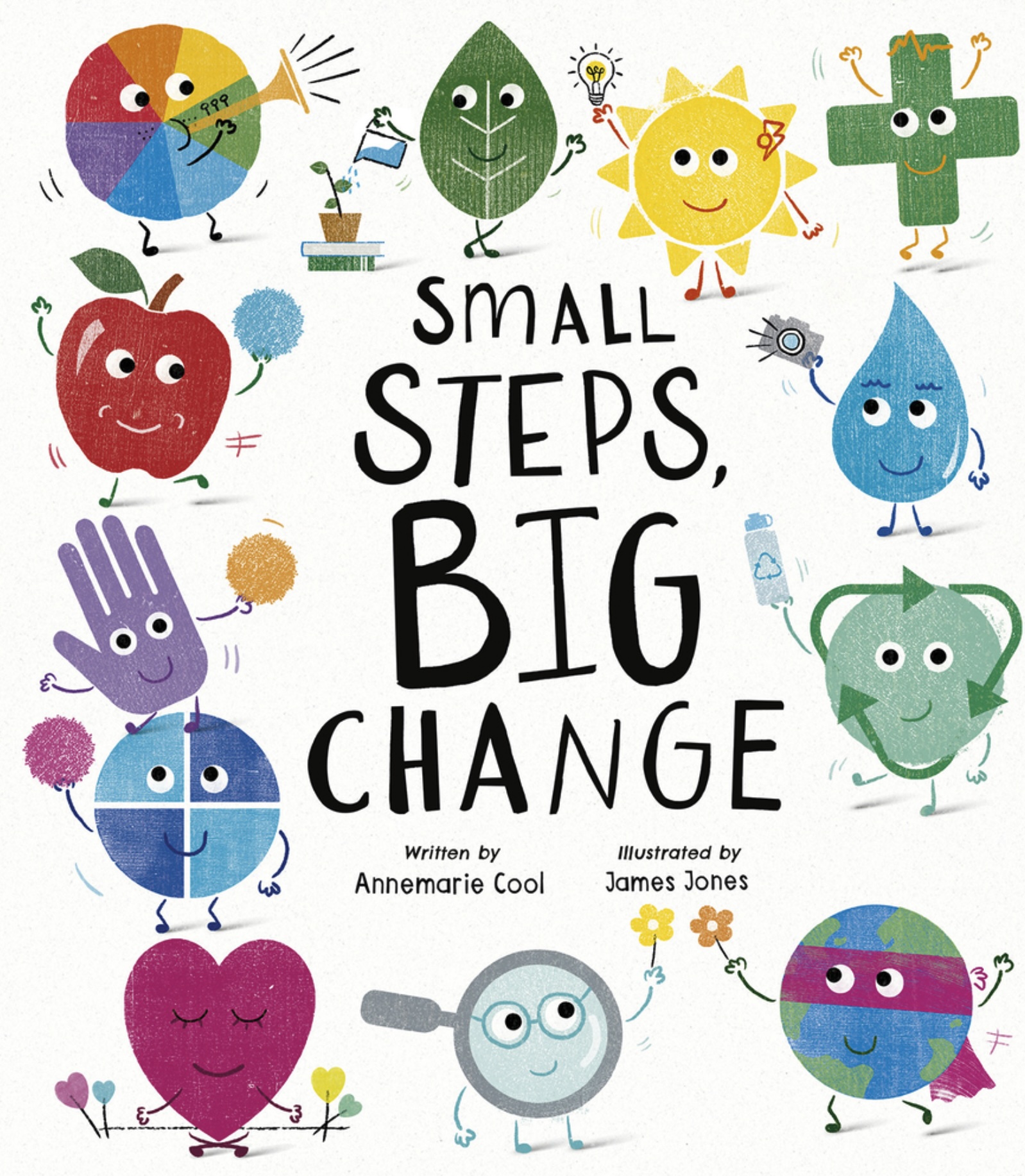
Small Steps, Big Change, by Annemarie Cool; illustrated by James Jones (Tiger Tales Books) — Environment / Sustainability / Recycling, Social Activism / Equality / Feminism, How-to / Activity, ages 4-6.
An uplifting, environmental picture book guide for kids ages 3-7 with 14 simple tips for helping to build a better tomorrow, inspired by the United Nations Sustainable Development Goals.
Children ages 3-7 will meet Water Hero, Sharing Hero, and more fun characters as they present 14 simple tips that everyone can do to make our world a better place.
Everyone can make a difference when it comes to protecting the environment!
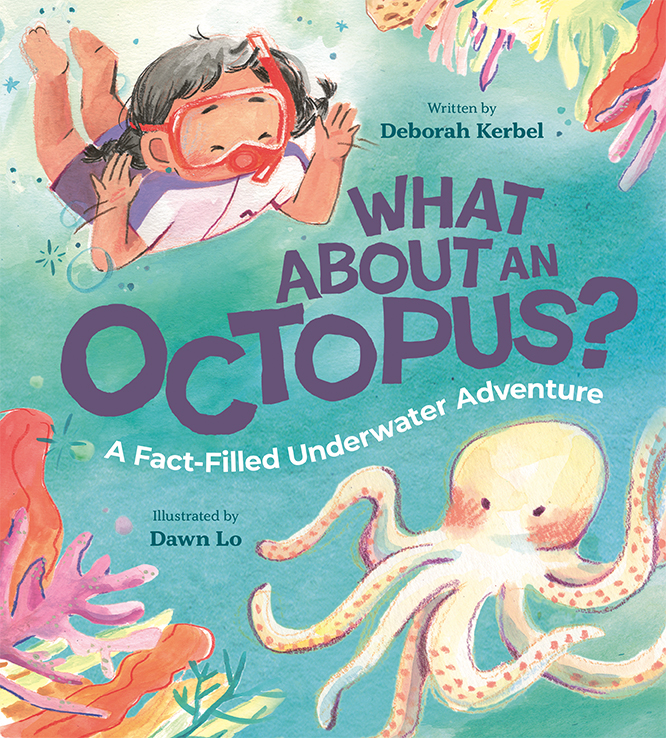
What About an Octopus?: A Fact-Filled Underwater Adventure, by Deborah Kerbel; illustrated by Dawn Lo (Owlkids Books) — Animals, Science / Nature, Environment / Sustainability / Recycling, Facts / Trivia, ages 4-6.
On a visit to the ocean, a curious little girl goes searching for a seashell and meets a new eight-armed friend.
While at the ocean, a curious young girl goes searching for a seashell and finds an octopus friend instead. The encounter turns into an afternoon full of play and discovery. From eating, to napping, to playing, octopuses are just like us … aren’t they? Well, maybe not quite …
For instance, when you spot an octopus, you might be tempted to shake its hand. Please don’t! A friendly wave is just fine. A sidebar explains that all octopuses have eight arms, and some can even detach an arm to escape when trapped or threatened. (Don’t worry–the arm will grow back!)
Throughout this underwater adventure, fun-to-read sidebars add context by describing a variety of fascinating facts about octopuses, while colorful, movement-filled illustrations perfectly capture the charm and gentle humor of this informational picture book.
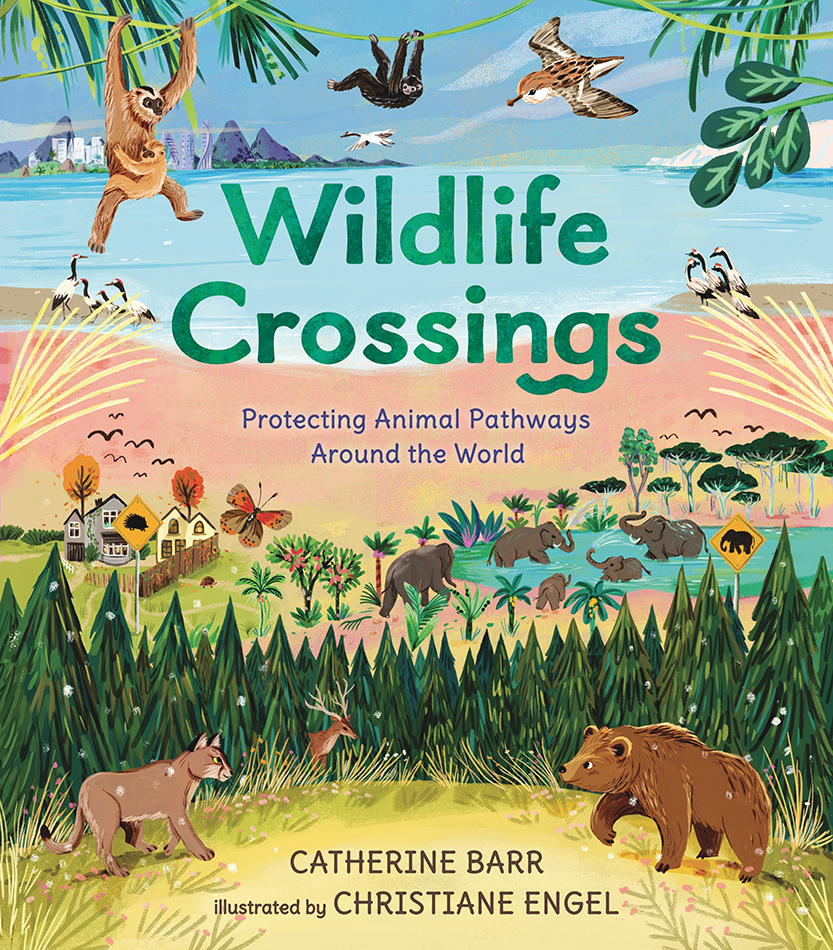
Wildlife Crossings: Protecting Animal Pathways Around the World, by Catherine Barr; illustrated by Christiane Engel (Candlewick Press) — Environment / Sustainability / Recycling, Animals, Construction / Transportation, Science / Nature, ages 7-12.
From the cocreators of Water: How We Can Protect Our Freshwater comes a compelling picture book about threatened animal species around the world, among them elephants, hedgehogs, spoon-billed sandpipers, gibbons, salmon, grizzly bears, and cougars. Discover how the infringement of humans into these creatures’ habitats has cut them off from vital pathways and put them at risk, then find out how people are helping them by reconnecting wildlands and waterways. Trace the animals’ tracks, understand their challenges, and explore their journeys to find food, water, and the mates they need to survive. With an engaging narrative and bold illustrations, this enlightening book offers an end note providing a brief overview of similar challenges and solutions involving six more international species.
How have we prevented wild animals from accessing the pathways they need to survive? A look at seven species that humans have put at risk and are now trying to help.
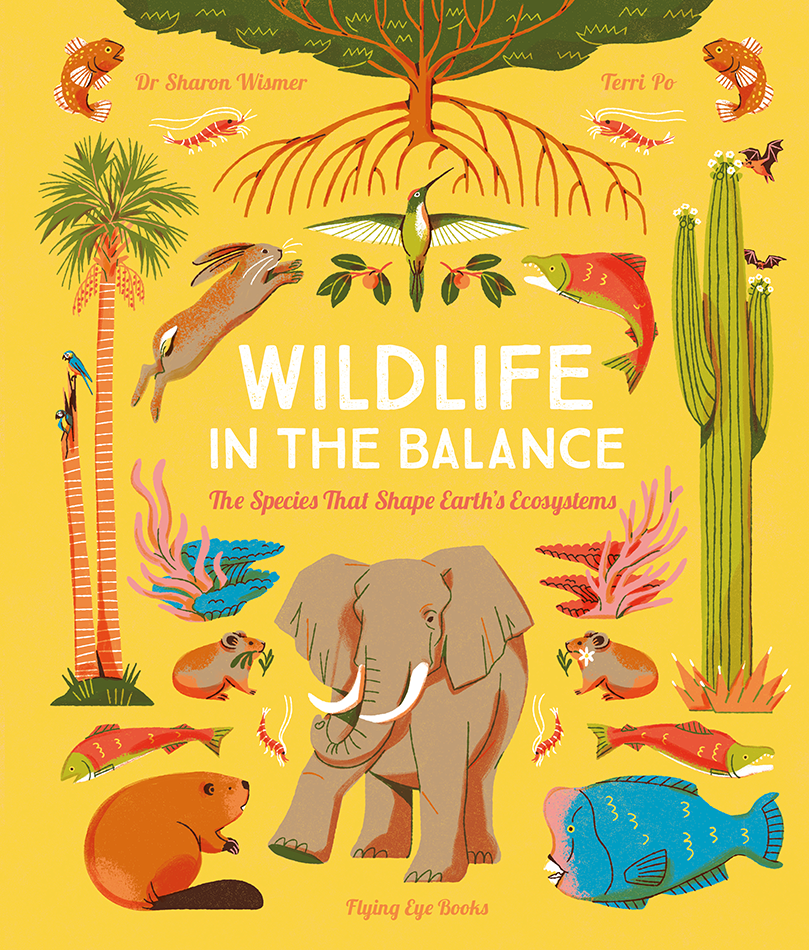
Wildlife in the Balance: The Species that Shape Earth’s Ecosystems, by Dr. Sharon Wismer; illustrated by Terri Po (Flying Eye Books) — Animals, Environment / Sustainability / Recycling, Science / Nature, ages 7-12.
Meet some of our planet’s most important animals and discover the remarkable ways they are helping save our planet.
Learn about 25 keystone species around the world from elephants to wolves, honeybees to beavers. Keystone species are animals or plants that play a crucial role in different habitats and have a huge effect on the environment around them. Entire ecosystems can depend on a single species, and they act as a glue that holds the ecosystem together. The book will introduce readers to keystone animals across all the five major biomes (aquatic, grassland, forest, desert, and tundra) with facts about wildlife, habitats, and modern conservation practices to protect these species.
For more great book suggestions, be sure to check out the full August Hot Off the Press list!
List compiled by CBC’s resident book connoisseur, Brooke Pisarsky. Check out other Hot Off the Press Spotlight book lists on our blog.

